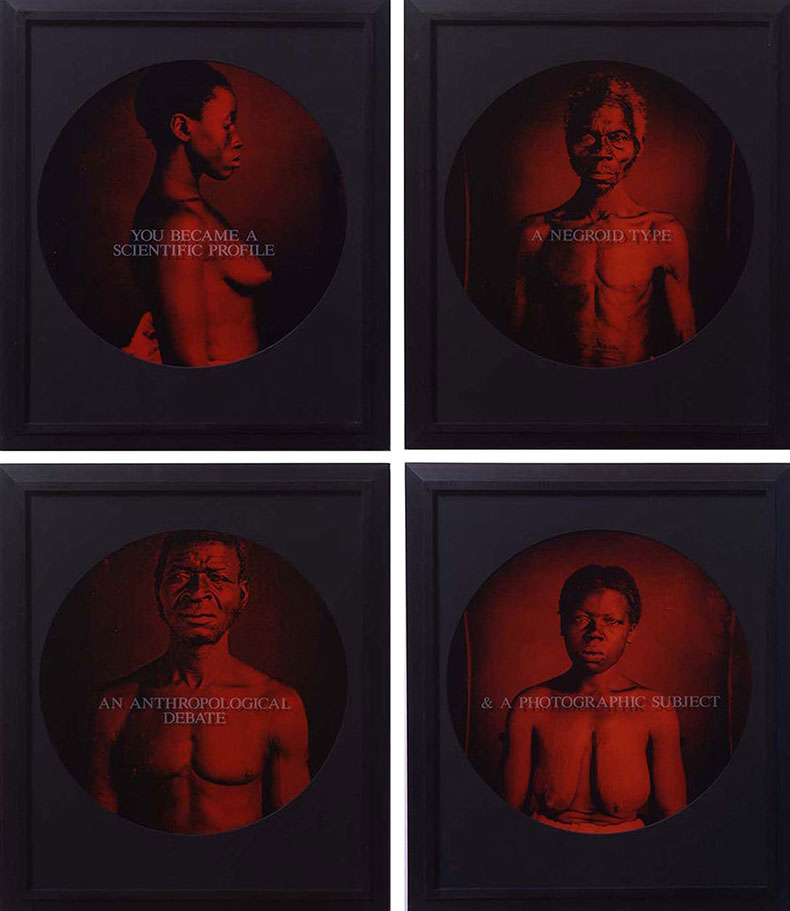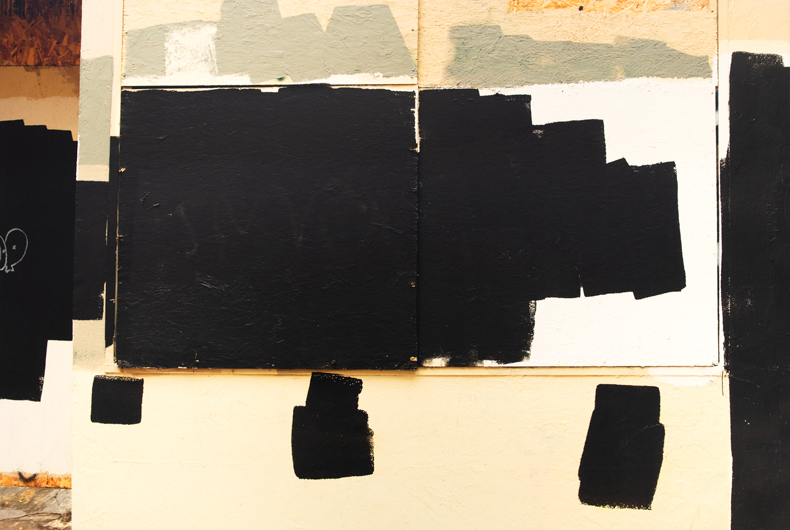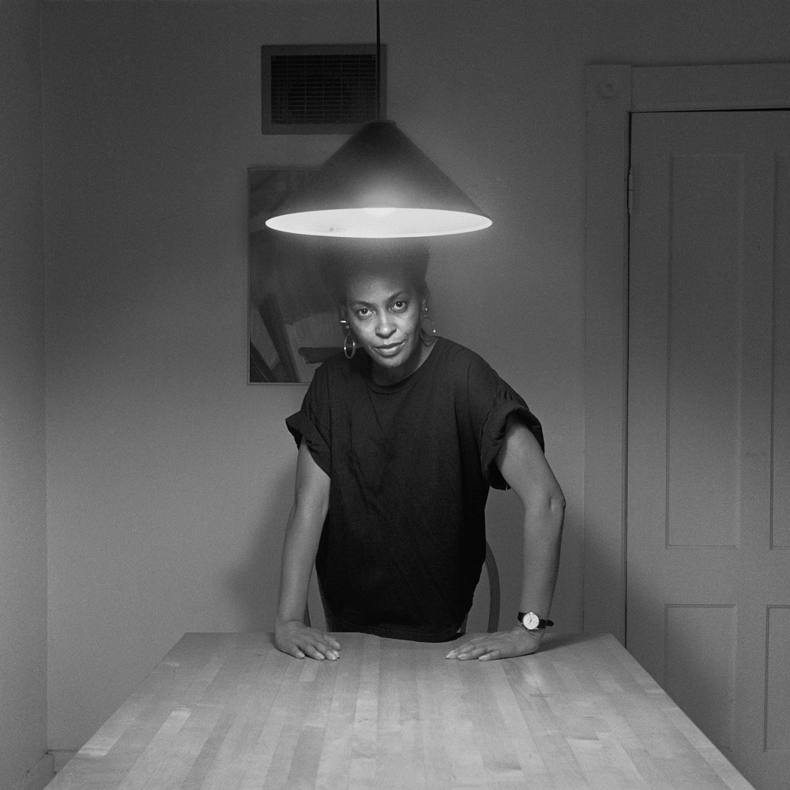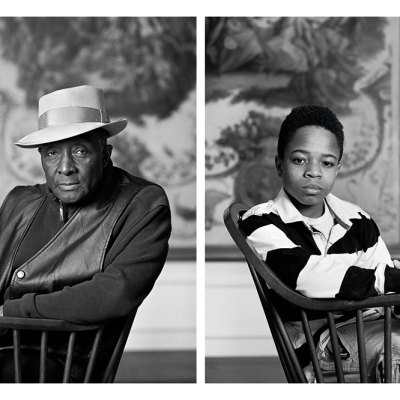Halfway through Carrie Mae Weems’s exhibition at the Barbican the artist stands alone in a black frame. With both palms resting firmly on a kitchen table, she leans forward, gazing at the viewer with a knowing, defiant stare. This simple image is one of the highlights of the Kitchen Table Series (1990), which chronicles the experiences of a Black woman navigating love, motherhood and selfhood in a world where even the most intimate moments are political. It is also a rare moment in this survey spanning the last 30 years of her career where Weems looks directly at the audience.
But the artist’s presence can be felt even when she cannot be seen, in the words that often accompany her photographs or the voiceovers that narrate her films. From Here I Saw What Happened And I Cried (1995–96) is an early work featuring daguerreotypes of enslaved men and women from the archives of the Peabody Museum at Harvard. Weems transforms these images that were originally used to promote polygenism (the theory that different races represented different species), tinting them red and superimposing words describing the experiences of those depicted: ‘Black and tanned your whipped wind of change howled low blowing itself – ha – smack into the middle of Ellington’s orchestra / Billie heard it too and cried strange fruit tears.’ Here, she fills in gaps in the archive, combining words and images to imagine a story for the figures within the frames.
You Became A Scientific Profile; A Negroid Type; An Anthropological Debate; and & A Photographic Subject from From Here I Saw What Happened and I Cried (1995–96), Carrie Mae Weems. Photo: courtesy the artist, Jack Shainman Gallery, New York/Galerie Barbara Thumm, Berlin; © Carrie Mae Weems

Bearing witness to the African-American experience across the centuries is at the heart of Weems’s art, which blends documentary and staged imagery that at various points provoke, question and even, occasionally, comfort the viewer. A Land of Broken Dreams (2021), an installation that in the version at the Barbican recreates a living room from the Black Panther era, is dotted with photos of the movement’s most prominent activists. In the middle are viewfinders for the audience to pick up, which transport you to the slave sites of Gorée island (Senegal) and Elmina Castle (Ghana), among others, through grainy black-and-white photos. While wandering through this installation, I hear a voice leaking in from another room: ‘There’s a man, African-American, he’s got a bicycle helmet. He’s recording me and threatening me and my dog.’ These familiar words from the summer of 2020 – of a white woman calling the police on an African-American man bird-watching in Central Park – invade the space. It’s an ironic reminder of how racism relentlessly interrupts everyday life.
Still from Cyclorama – The Shape of Things: A Video in 7 Parts (2021), Carrie Mae Weems. Photo: courtesy the artist, Jack Shainman Gallery, New York/Galerie Barbara Thumm, Berlin; © Carrie Mae Weems

It turns out that the voice is part of The Shape of Things, a 39-minute film presented on a panoramic curved screen. The film takes the viewer through seven acts, including segregation-era protest scenes, circus imagery interspersed with footage from the Capitol riot in 2021 and a scene of a woman surrounded by falling sheets of paper. The climax of the film offers some relief as rain-soaked figures caress their bodies in a trance-like state. Weems’s voice offers a weighty but somewhat elusive commentary to this loose collage. Despite her eloquence, it is not entirely clear what she is trying to say. Perhaps the film is deliberately ambiguous, or perhaps it is trying to say too much.
The works Weems allows to speak for themselves are among the most powerful. At first glance, Painting the Town (2021) appears to be a series of abstract paintings in muted colours. The caption explains that these are in fact photographs of boarded-up storefronts, taken after demonstrations following the murder of George Floyd, in Portland, Oregon, where the artist was born. The local authorities repeatedly painted over the protest graffiti scrawled across these walls and Weems was struck by the abstract quality these bruised buildings began to assume. Through careful use of lighting and cropping, her photographs turn them into fields of flat colour that evoke a sense of brokenness and erasure.
Painting the Town #3 (2021), Carrie Mae Weems. Photo: courtesy the artist, Jack Shainman Gallery, New York/Galerie Barbara Thumm, Berlin; © Carrie Mae Weems

But Painting the Town looks beyond the immediate aftermath of the protests, to the lack of recognition for Black artists in the history of Abstract Expressionism. This theme of exclusion appears elsewhere in her work too. In the Museums series (2006–present), Weems pictures herself in a black robe in front of major institutions with her back to the camera. Here, she is not asking to be let in but rather questioning the dominance of spaces that were not built with her in mind. Deliberately placing herself outside but looking in, the series explores the artist’s relationship to art institutions themselves – a total inversion of the kitchen-table image where she is inside, looking out at us.
Still, something about the Museums series feels a little too staged; the idea feels more compelling than the execution. We do not always need to see or hear Weems to feel the power of her gaze. The artist’s constant experimentation with language, moving images and photography is captivating, but this exhibition is most striking when Carrie Mae Weems draws us directly into what she sees.
Untitled (Woman Standing Alone) from Kitchen Table Series (1990), Carrie Mae Weems. Photo: courtesy the artist, Jack Shainman Gallery, New York/Galerie Barbara Thumm, Berlin; © Carrie Mae Weems

‘Carrie Mae Weems: Reflections for Now’ is at the Barbican Art Gallery, London, until 3 November.



